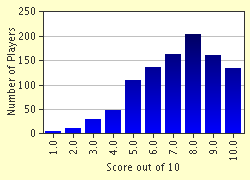Quiz Answer Key and Fun Facts
1. Methylated spirits is a very common household chemical - but what is its main component?
2. Most people have used superglue at one stage or another, but what is its major chemical component?
3. Bleach is another useful household chemical. It is often referred to as "chlorine bleach", but this is a misnomer. What is the main component of household bleach?
4. Nail polish remover is something that girls just can't do without. Which of the following has been used as the active ingredient in nail polish remover?
5. If you've been in the unfortunate situation of having to use a fire extinguisher to fight a fire (or had the chance to use one at a fire safety course, like me!), you've probably noticed that there are lots of different types. One of these types is the "dry ice" extinguisher. What is dry ice?
6. The humble pencil is something found in just about every household. Often called "lead pencils", the substance in the middle of the pencil that does the writing actually isn't lead at all; what is it?
7. I've already mentioned superglue in this quiz. Another common adhesive used around the home is woodworking glue, also known as PVA glue, Aquadhere and many other names. What is the major component of this adhesive?
8. Aspirin can be found in many household medicine cabinets. But what is it chemically?
9. "Antifreeze" is used in car radiators to stop the liquid that cools the engine from, well, freezing when it gets cold outside. Water is one component of antifreeze; which compound below can be used as the other main component?
10. If you wanted to lighten your hair at home, which of the following is potentially an active ingredient in the dye preparation that will lighten your hair?
Source: Author
NatalieW
This quiz was reviewed by FunTrivia editor
crisw before going online.
Any errors found in FunTrivia content are routinely corrected through our feedback system.

